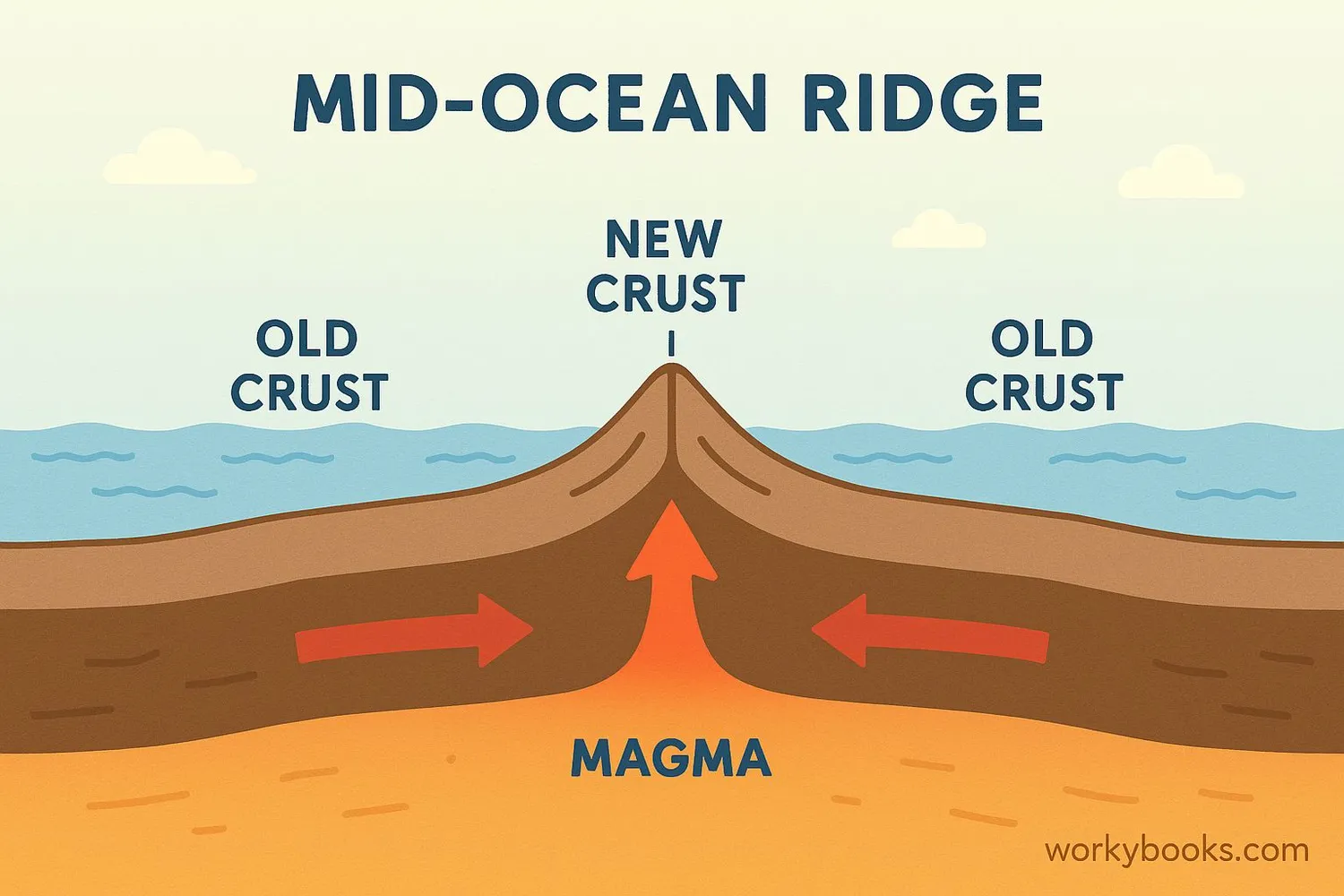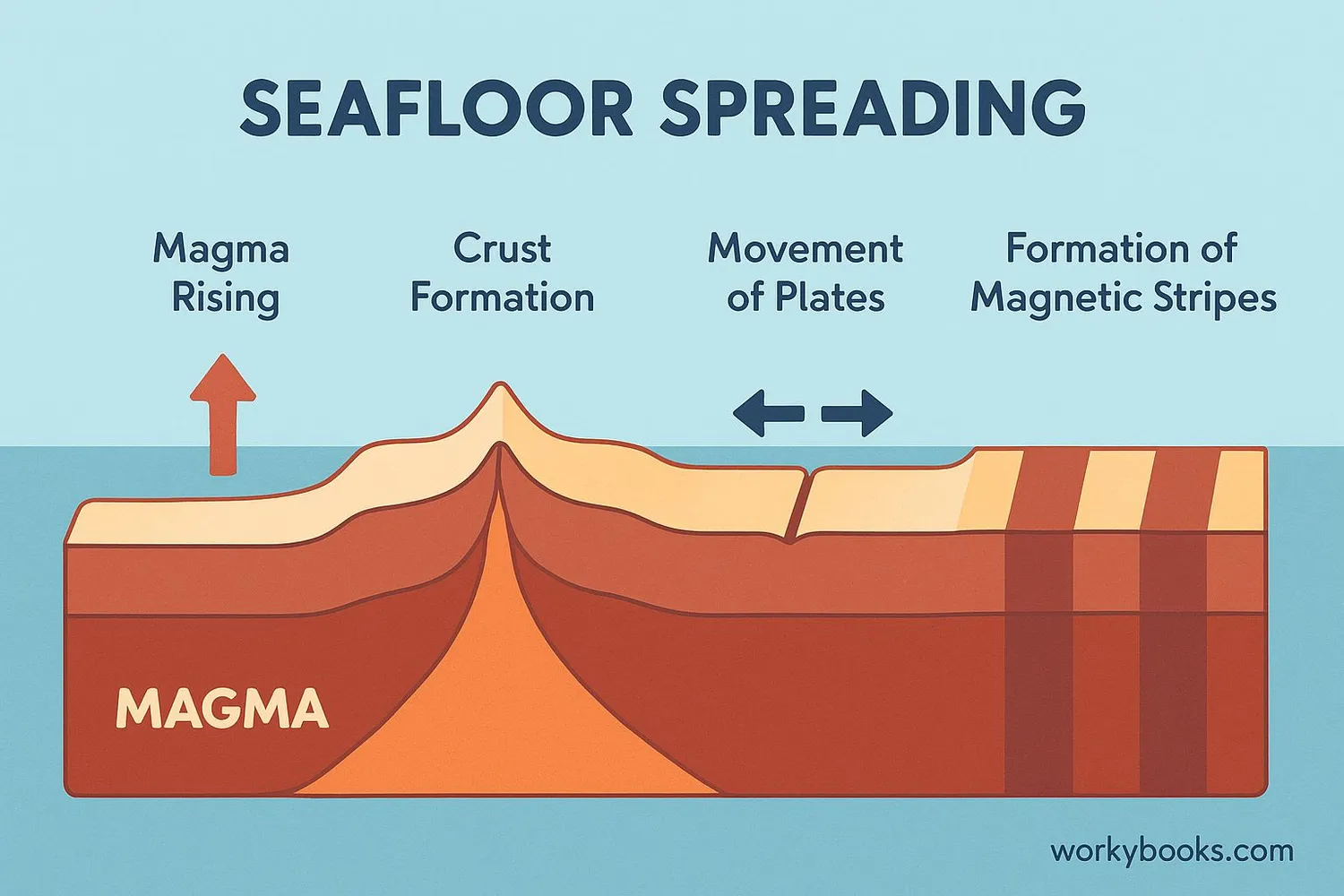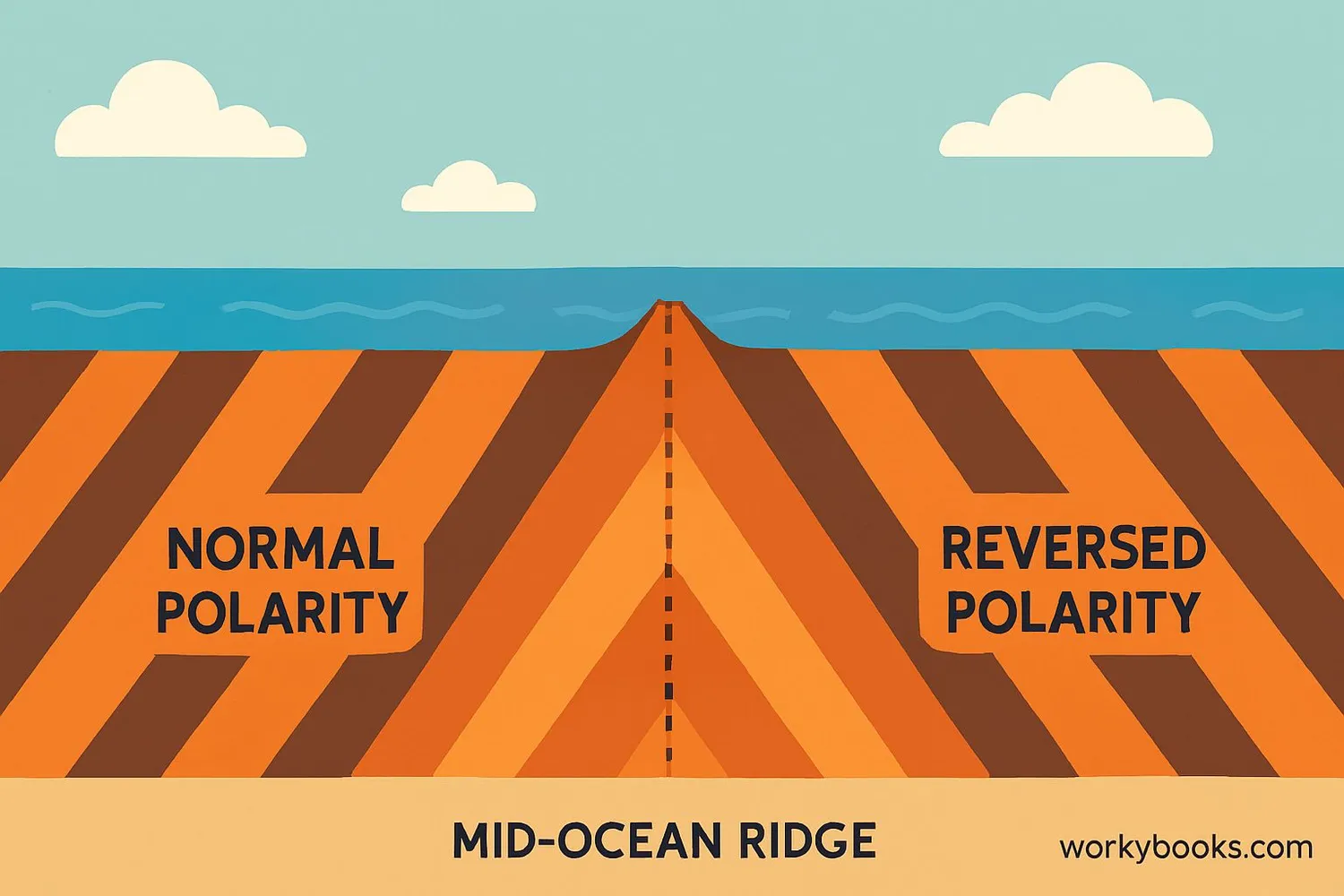Seafloor Spreading - Definition, Examples, Quiz, FAQ, Trivia
Discover how Earth's ocean floor grows and changes over time!
What is Seafloor Spreading?

Seafloor spreading is the process where new oceanic crust is formed at mid-ocean ridges and gradually moves away from the ridge. This amazing geological process helps explain how Earth's tectonic plates move and why continents drift apart over millions of years.
Imagine the ocean floor as two giant conveyor belts moving in opposite directions! At the center of these belts is a mountain range deep under the ocean where magma from Earth's mantle rises up, cools, and forms new crust. As more magma comes up, it pushes the existing crust aside, making the ocean floor wider.
Did You Know?
The Atlantic Ocean grows about 2.5 cm wider each year because of seafloor spreading at the Mid-Atlantic Ridge!
How Seafloor Spreading Works

Seafloor spreading happens at special locations called mid-ocean ridges. These are underwater mountain ranges where Earth's tectonic plates are moving apart. Here's how this amazing process works:
Magma Rises
Hot magma from Earth's mantle rises through cracks at mid-ocean ridges
New Crust Forms
Magma cools and solidifies, creating new oceanic crust
Plates Move Apart
As new crust forms, it pushes older crust away from the ridge
Symmetrical Pattern
New crust forms on both sides, creating matching patterns
Continuous Process
The cycle repeats, slowly widening the ocean basin
This process is part of the larger theory of plate tectonics. The Earth's surface is divided into several large plates that float on the semi-fluid mantle below. Where these plates pull apart at mid-ocean ridges, seafloor spreading occurs, creating new crust. Where plates collide, one might slide beneath another in a process called subduction.
Underwater Mountains
The Mid-Atlantic Ridge is the longest mountain range on Earth, stretching over 16,000 km (10,000 miles) through the Atlantic Ocean!
Evidence and Importance

Scientists discovered convincing evidence for seafloor spreading in the 1960s. This evidence revolutionized our understanding of Earth's geology. Here are the key pieces of evidence:
Magnetic Stripes
Symmetrical patterns of magnetic minerals on either side of ridges
Age of Rocks
Rocks are youngest at ridges and get older farther away
Plate Movement
Direct measurements show plates moving apart
Why is seafloor spreading important?
1. Explains continental drift: Seafloor spreading provides the mechanism for how continents move.
2. Creates ocean basins: This process forms new ocean floors and shapes Earth's geography.
3. Recycles Earth's crust: Old crust is destroyed at subduction zones, creating a cycle.
4. Impacts life on Earth: It influences ocean currents, climate, and the distribution of life.
Seafloor Spreading Quiz
Test your knowledge about seafloor spreading with this quiz! Answer all 5 questions to see how much you've learned.
Frequently Asked Questions
Here are answers to some common questions about seafloor spreading:
Amazing Seafloor Facts
Discover some fascinating facts about seafloor spreading and ocean geology:
Young Ocean Floor
The oldest ocean floor is only about 200 million years old, while some continental rocks are over 4 billion years old! This is because ocean crust is constantly being recycled.
Underwater Geysers
Hydrothermal vents at spreading centers create amazing ecosystems with temperatures over 400°C! Unique creatures like giant tube worms thrive in these extreme environments.
Magnetic Time Capsule
The magnetic stripes on the ocean floor act like a tape recorder of Earth's magnetic history, showing hundreds of magnetic field reversals over millions of years!
Revolutionary Discovery
The theory of seafloor spreading, developed in the 1960s, finally provided the mechanism for continental drift that had puzzled scientists for decades.


